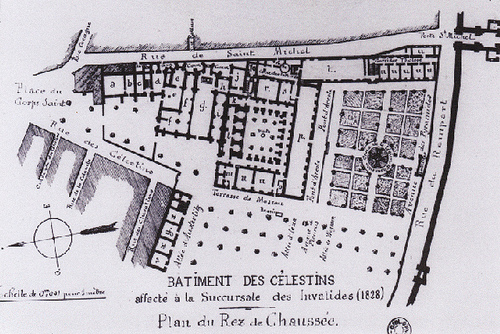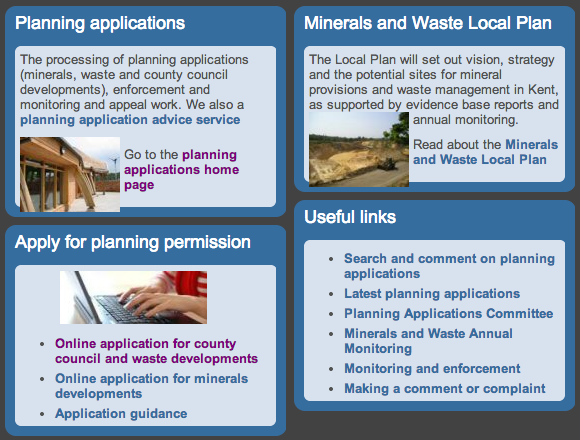
Image by Véronique Pagnier
Planning permission is a ticklish issue anywhere in the UK, but adding to the confusion is the fact that each local authority has a slightly different approach to handling the most important issues.
All the details might be the same behind the scenes, but since you're not dealing with what goes on behind the scenes, that's not a great deal of help. For that reason we're going to explain, in clear and simple terms, the steps you need to take to obtain planning permission in Kent.
Negotiating Your Local Planning Application Website
First of all, although it might seem like the most obvious route, you can't actually apply for most planning permissions through the official Kent website.
The Kent Planning Application Group are only there for quarries, council buildings and waste management sites. If your planning application doesn't cover any of these areas (and we're betting that it doesn't), you'll need to be more precise, whether you're in the Medway like us, or a little further afield.

What you'll see on the Kent planning applications page.
This means moving into the uncharted depths of local governmental departments, but don't worry!
Following the recent overhaul of almost every government-owned website, local council sites are almost a pleasure to navigate. Almost.
Most local authorities within Kent have implemented their own unique style and 'skin' over the basic framework provided, and a few have even eschewed the basic framework completely – so that the site for Tunbridge Wells, for instance, looks nothing like the local government site here in the Medway.
Local Council Websites Made Easy
For quick reference, the appropriate places to start obtaining planning permission in your borough are listed below:
- Ashford Borough Council Planning Permission
- Bexley Borough Council Planning Permission
- Bromley Borough Council Planning Permission
- Canterbury City Council Planning Permission
- Dartford Borough Council Planning Permission
- Dover District Council Planning Permission
- Gravesham Borough Council Planning Permission
- Maidstone Borough Council Planning Permission
- Medway Council Planning Permission
- Sevenoaks District Council Planning Permission
- Shepway District Council Planning Permission
- Swale Borough Council Planning Permission
- Thanet District Council Planning Permission
- Tonbridge & Malling Borough Council Planning Permission
- Tunbridge Wells Borough Council Planning Permission
These links should take you as close to the planning application stage as possible. Let us know if they become broken over time!
Tall Fences Make Angry Neighbours
One of the most important things to consider when making a planning application, wherever you are, is the wellbeing of your neighbours. Since anyone can view and comment on a planning application, it's important to let anyone who could be affected by your changes know as soon as possible.
For Kent planning permission especially, as an area with lots of old and impressive buildings, close to London and with valuable land, you should check with anyone who has been in the area for a long time, and try to make sure that your improvements are in keeping with the general tone of the area.
This isn't just an act of charity, as minimising the impact of your development on the surrounding area will maximise your chances of getting through the application process unscathed, and potentially save you a lot of money later on.

Avoid the red tape! - Image by James Petts
Before deciding on a definitive course of action for your project, then, ask yourself these three questions:
- How many people will this affect?
- How many people would be surprised by this change?
- How many people are heavily invested in the area?
If you find that you've answered "a lot" to any of these questions, you could face problems with your current planning application.
If the planned development will affect a lot of people, it's worth double-checking with them to make sure they're on-board and gather advice to save yourself problems later. If it's a big enough change that it could surprise a lot of people, even if it's good it could face some significant opposition. In relation to the last of the three questions, it should be expected that people who have spent a lot of money investing heavily in an area are going to be leery of any new development.
In any of these cases, it's worth considering enlisting outside help at some point in case strong objections to your development are made.
What Is A Local Development Framework?
Each council in Kent will have its own specific roadmap for the future, known as the Local Development Framework. Here, for instance, is the Local Development Framework for Medway. As you can see, it's a comprehensive document which takes into account more than enough information for you to decide whether your developments fit with the local council's vision. If it doesn't fit very well, you might find that obtaining planning permission requires specialist knowledge.
We look at your local development framework in more detail in our guide to planning applications in Medway, Chatham, Rochester and Gillingham, so if you live in those areas it's worth checking them out.
What Next?
If you found it difficult to apply through the specific local council planning portals, you can try applying through the generic online planning portal.
If you've made a planning application in Kent already but it didn't go as planned, you can come to us for guidance and advice.
Or if you've got any more questions, ask away in the comments section and we'll do our best to answer them!
